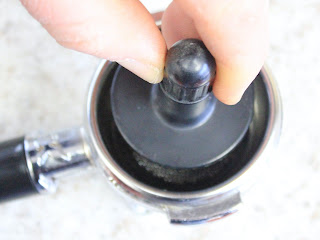At 1st-line Equipment, we get this question at least once a week. This is a very difficult question to answer as there are several factors that come into play.
Coffee Grinders Design and Manufacture
Most European made espresso coffee grinders are hand assembled in a production line. There can be differences in the grind fineness from two different grinders produced in the same production lot.
The biggest challenge are the grinders that have the numbered settings sticker-ed onto the bean hopper or the top burr plate. When the stickers are placed, they may not be placed in the same exact spot during production.
These small difference in manufacturing can impact the choice of grind fineness setting on a grinder.
Coffee Beans
Coffee is grown on trees and usually harvested twice a calendar year. Typically, two coffee beans grown in a cherry. When there is only one larger bean, it is called a peaberry. The beans are extracted from the cherries which go through a milling process. Beans can be washed, semi-washed, or not washed.
Coffee beans can have different levels of water content, different hardness levels, and different absorption rates. And, these factors can change from harvest to harvest and year to year as environmental factors, such as sunlight, rain, ground moisture, pests, and temperature in each season.
In other cases, some manufacturers sometimes set the grind adjustment too fine and less often, they have it set too coarse.
These changes in the coffee farming life cycle can impact the choice of grind fineness setting on a grinder. Changing coffee blends will typically require an adjustment as well.
Blends and Commercial Coffee Roasters
There are thousands of different coffee and espresso blends roasted by
thousands of coffee roasters globally. Each blend of coffee is typically
made up of different beans from different countries, different regions
within those countries, and many times from different farms within a region.
Master roasters try to balance the blend of beans from the different beans by changing the percentages of each bean. When there is a shortage of a particular bean or to lower costs, a substitute is found.
Hence, Master Roasters can change the makeup of the blend to achieve the flavor profile they are trying repeat from batch to batch.
These changes in the actual bean blend profile can impact the choice of grind fineness setting on a grinder.
Local Environment
So, you are ready to go and starting grinding your coffee. Where do you start? Typically, on a European espresso coffee grinder, the starting point is typically where the manufacturer sets it upon arrival. Then there are fine tune adjustments that need to be made based on the extraction timing, look of pour, and most importantly, the flavor profile and mouth feel of the espresso.
Most clients tend to set it and forget it on the grinder's fineness setting. For regular brew, press pot, or vacpot coffee brewing methods, one can get away with this. However, for espresso extractions, one typically needs to change settings daily or the minimum weekly on the espresso grinder. It is a good idea to keep the following in mind:
a) the oils in the bean tend to absorb to the center of the bean as the beans age. Therefore, the grinder needs to be set slightly finer as the beans age.
b) Humidity and ambient temperature can also factor into the quality of the espresso extraction. We normally receive calls and emails during seasonal changes.
As one can imagine, even with the manufacturer's setting, adjustments to the grind settings are a certainty with any coffee grinder.





















